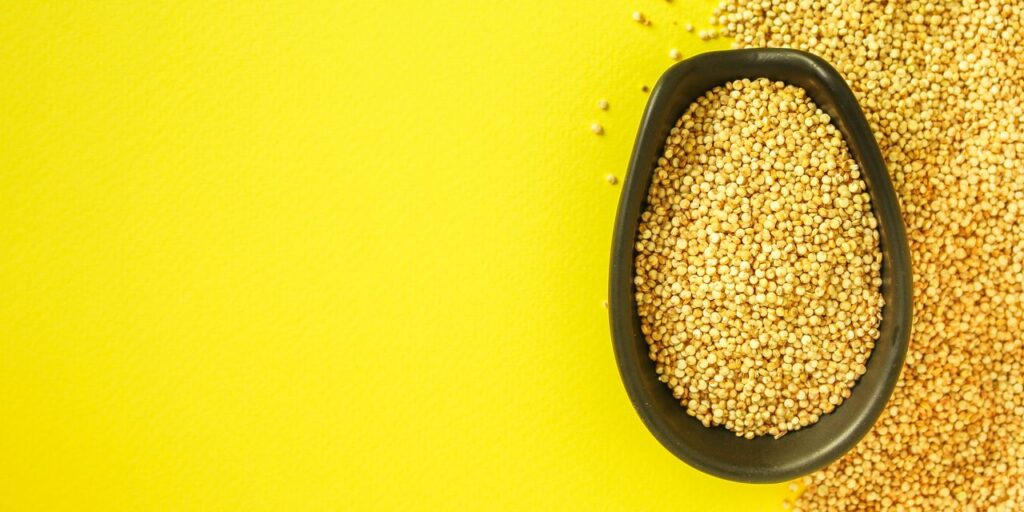Meat, cheese, yogurt, and other animal products are famously filled with protein, but the vital nutrient can turn up in plant-based places, too—and yes, there are even some high-protein grains out there. Still rich in energizing carbs, these options can also serve as a convenient protein source for folks who are trying to vary their diet (or those who prefer to limit or avoid animal products, period.)
Protein is important for a bunch of reasons. “It provides the building blocks for our body to build muscle, build tissue, carry out essential functions, and make hormones, so it’s important to get enough,” Thanh Thanh Nguyen, MS, RDN, a registered dietitian at Mendinground Nutrition, tells SELF. High-protein grains also pack all the nutrients normally associated with plant-based foods, like “vitamins and minerals, phytochemicals, fiber, and healthy unsaturated fats,” Alissa Lupu, RD, CDN, a clinical dietitian nutritionist at NewYork-Presbyterian/Columbia University Irving Medical Center, tells SELF. Fiber is one particularly important example: Not only does it help “promote regular bowel movements and a healthy gut microbiome,” Lupu says, it’s also associated with a lower risk of conditions like heart disease and colorectal cancer. What’s more, it works in conjunction with the protein to slow the release of glucose into your bloodstream, helping you maintain a steady blood sugar level and avoid spikes (and the energy-crashing fall that follows them).
So by eating high-protein grains, you’re in for the best of both worlds: getting a solid dose of protein of the sort typically associated with animal products, but also “optimizing for fiber and other vitamins, minerals, and micronutrients,” Nguyen says.
And we’ve got a whole host of ’em for you to try. A few things to know about grains first, though, since they can get a little confusing. Technically speaking, they’re edible seeds of grassy plants belonging to the Poaceae family, including wheat, rice, corn, barley, and oats. (Pseudograins—like quinoa, buckwheat, and amaranth—are seeds that come from different families, but because they look and act like actual grains, they’re often lumped along with them.) Grains can be whole or refined; the former contains the entire grain kernel, so they tend to have more fiber, iron, B vitamins, and other important nutrients. Some can also be complete proteins, meaning they contain all nine essential amino acids, the protein components that your body can’t produce on its own. And you might be surprised to know that some types of grains are gluten-free, so they won’t cause digestive issues in people who have food intolerances like celiac disease.
With that refresher in mind, peruse our list below of high-protein grain options, chock-full of nutritional callouts that make each of them stand out—and a bunch of ways you can use them in your own meals.
1. Barley
4 grams per cup cooked
You might associate barley with beer and other alcoholic beverages, but it can also work as a food. Described as nutty and chewy, it’s a common addition to soups, salads, and stews. (Traditionally, it’s been used in biscotti-like Greek cookies known as “paximadia,” Scotch broth, and Scottish barley pudding, too.) Make sure to choose hulled or hulless barley at the store if you want the full nutritional benefits, since the pearled variety isn’t a whole grain.
2. Buckwheat
6 grams per cup cooked; gluten-free; complete protein


